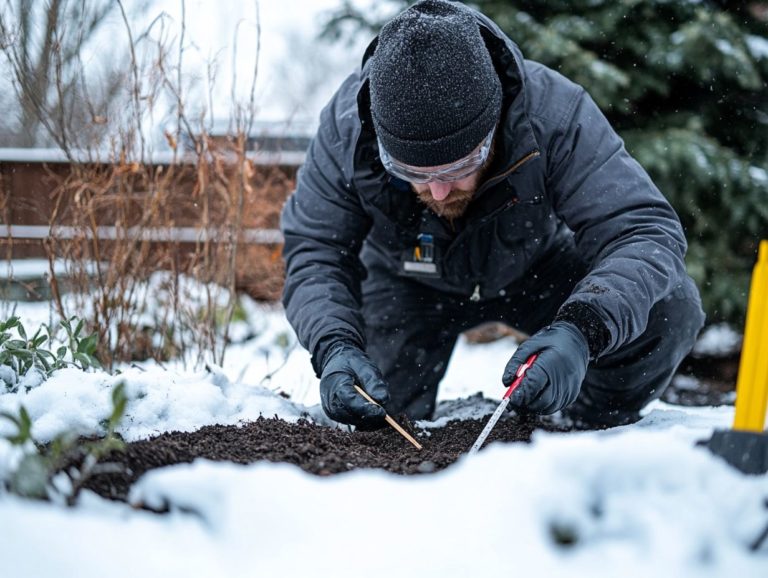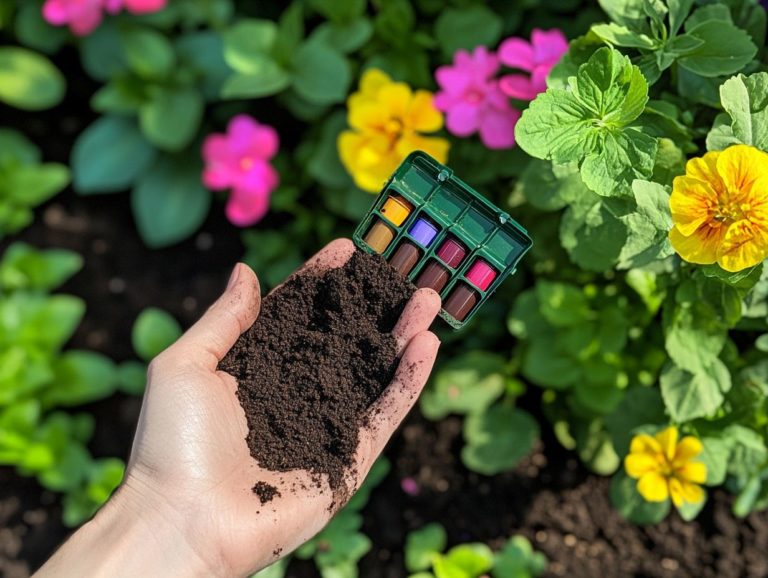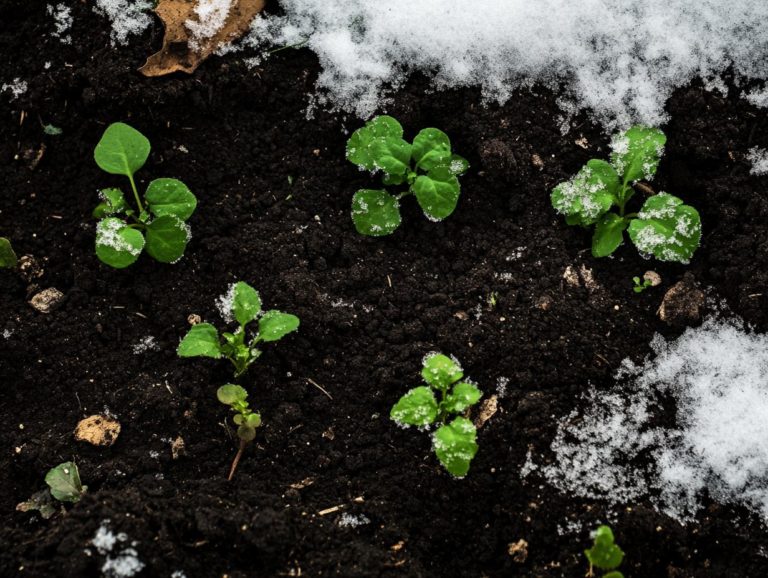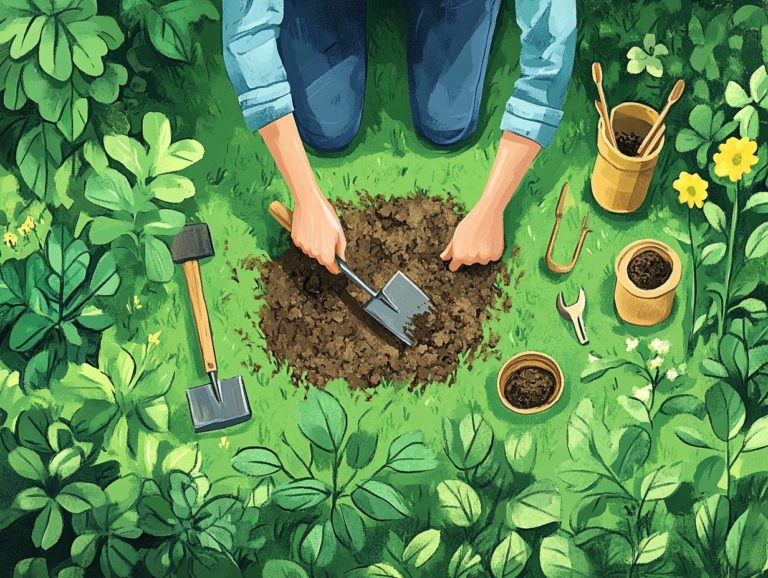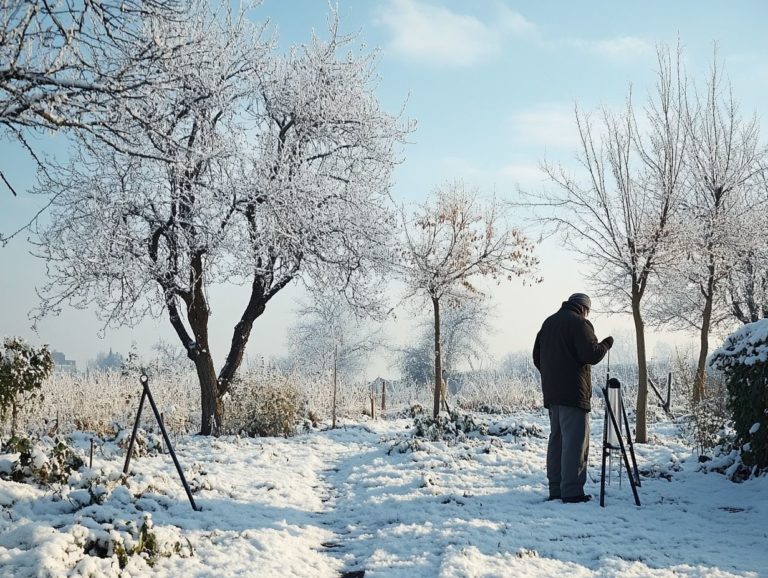The Impact of Freeze and Thaw on Soil
Freeze and thaw cycles are crucial for understanding how they affect soil structure and water movement. Grasping these processes is essential if you have an interest in agriculture, gardening, or environmental conservation.
In this article, you ll explore what freeze and thaw cycles are, how they physically alter soil, and their impacts on plant growth and nutrient availability. You will also learn about factors that influence the extent of freeze and thaw damage, along with effective prevention and management strategies.
Let s dive into how you can safeguard your soil from these seasonal changes!
Contents
- Key Takeaways:
- Understanding Freeze and Thaw Cycles in Soil
- The Effects of Freeze and Thaw on Soil
- Factors that Influence Freeze and Thaw Damage
- Preventing and Managing Freeze and Thaw Damage
- Frequently Asked Questions
- What is the impact of freeze and thaw on soil?
- How does freeze and thaw affect soil stability?
- Can freeze and thaw damage plant roots?
- How does freeze and thaw affect nutrient availability in soil?
- What can be done to mitigate the impact of freeze and thaw on soil?
- Is freeze and thaw a natural process, or is it caused by human activity?
Key Takeaways:
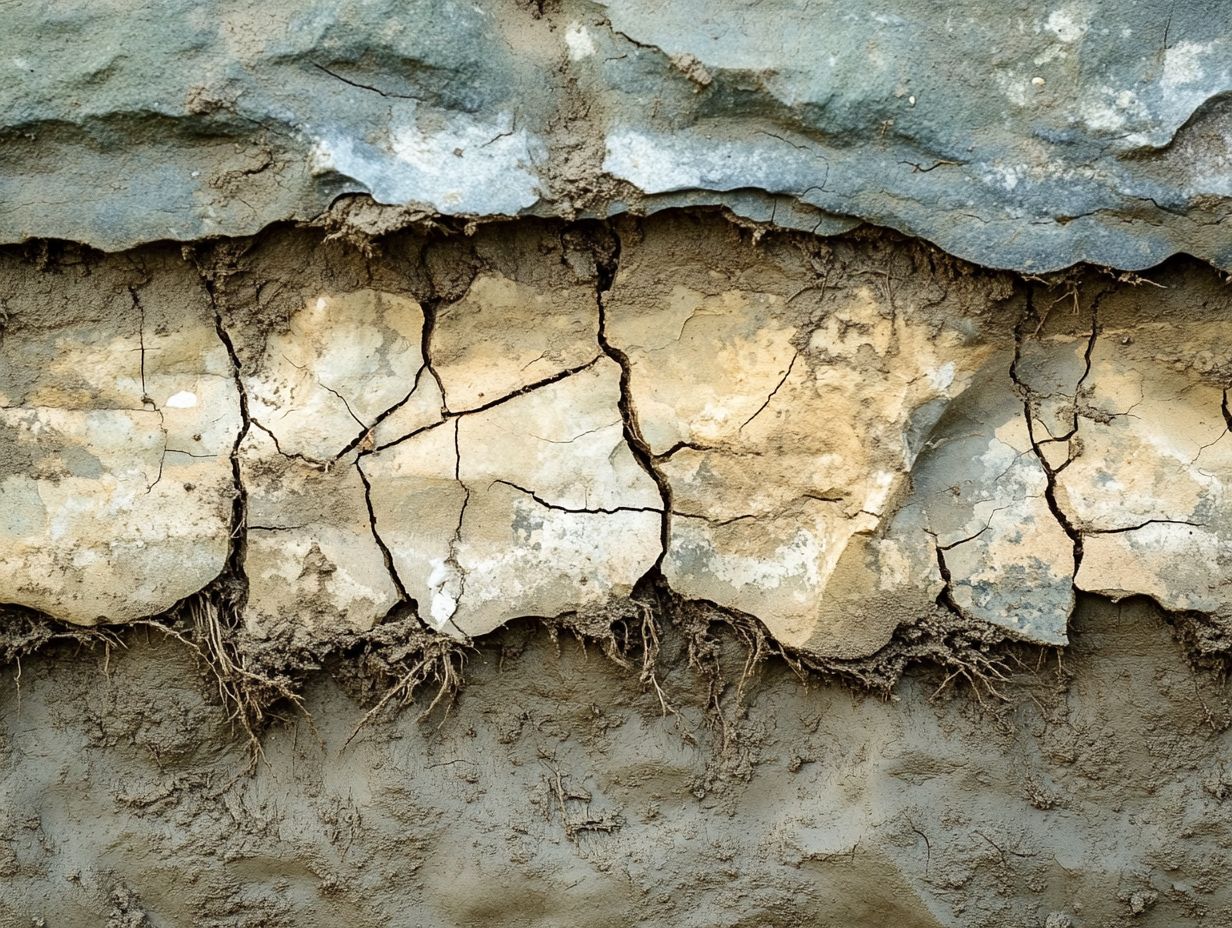
- Freeze and thaw cycles can significantly impact soil, resulting in physical changes and affecting plant growth and nutrient availability.
- Climate and soil composition play a crucial role in determining the extent of freeze and thaw damage.
- Implementing best practices and rehabilitation techniques can help protect and restore soil health from freeze and thaw damage.
Understanding Freeze and Thaw Cycles in Soil
Freeze and thaw cycles are crucial for understanding how they affect soil structure and water movement. This is especially important in regions like Germany, where climate change has intensified soil erosion.
These cycles involve the expansion and contraction of soil, influencing moisture levels and agricultural practices. Ultimately, this affects plant growth and land productivity.
By looking into the intricacies of these cycles, you can uncover the mechanisms that drive soil fragmentation and affect the connectivity of macropores. This, in turn, shapes both the landscape and agricultural viability.
Definition and Explanation
Freeze-thaw cycles describe the fascinating process where soil experiences freezing during low temperatures, followed by thawing as temperatures rise. This repetitive action leads to notable changes in soil clods and texture.
During these cycles, ice builds up in the soil. This creates pressure that breaks apart soil clumps, altering the overall structure. You may notice this phenomenon particularly in soils rich in swelling clay minerals, which expand when they absorb moisture and contract upon drying.
In winter, as ice develops, macropores can emerge, improving water and air accessibility within the soil matrix. When thawing occurs, these macropores allow for further expansion, enhancing both drainage and aeration.
The intricate dance of freezing and thawing not only modifies soil texture but also influences nutrient availability and microbial activity, ultimately impacting plant growth and overall soil health.
The Effects of Freeze and Thaw on Soil
Freeze and thaw cycles profoundly affect soil in many ways. These cycles significantly influence soil structure, moisture content, and hydraulic properties.
This can also lead to increased soil erosion and degradation, altering the landscape in both subtle and substantial ways.
Physical Changes in Soil
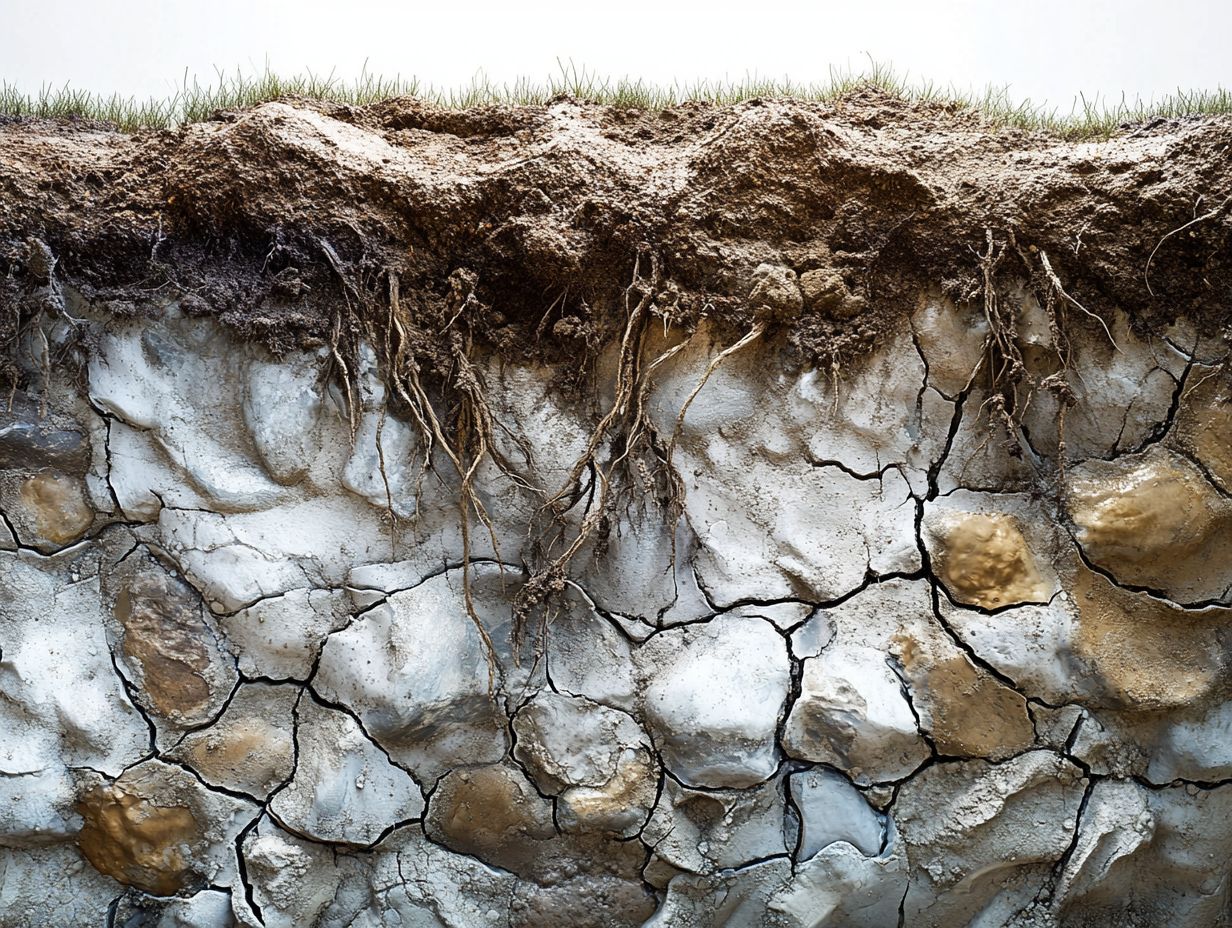
Freeze-thaw cycles induce physical changes that can significantly alter the soil’s structure and hydraulic properties. These changes are shown by soil samples and pore size distribution analyses.
These cycles cause soil particles to expand and contract due to the formation of ice and the subsequent melting. This leads to the fragmentation of soil aggregates.
Over time, this process enhances pore size distribution, resulting in a more heterogeneous arrangement of voids that influences water retention and drainage capabilities.
As these freeze-thaw dynamics continue, the permeability of your soil may decline, impacting overall moisture movement. Consequently, you may notice an increased potential for erosion and surface runoff, particularly in areas where compaction and other human activities have intensified the effects of these natural cycles.
Impact on Plant Growth and Nutrient Availability
Freeze-thaw cycles significantly impact soil moisture. This influences plant growth and nutrient availability, creating challenges for farming practices.
These cycles lead to periods of saturation and dryness in the soil. This disrupts the balance of soil organic matter, which is essential for healthy crop production.
As moisture levels fluctuate, your plants may find it harder to access essential nutrients. This makes it more challenging to maintain optimal conditions for growth.
Understanding these dynamics helps you implement strategies for sustainable agriculture. This enhances crop resilience and supports effective farming.
Factors that Influence Freeze and Thaw Damage
Factors influencing freeze and thaw damage include climate change and soil composition. These elements are shaped by both biotic and non-living environmental factors, which fundamentally alter the soil’s resilience to temperature fluctuations.
Climate and Soil Composition
Climate change profoundly affects soil composition, particularly its texture and structure. This, in turn, influences how soils react to freeze-thaw cycles.
As temperatures and precipitation patterns shift, moisture levels adjust accordingly. This leads to the breakdown of organic matter and changes in how soil particles aggregate.
With soil becoming increasingly vulnerable to erosion, its capacity to retain nutrients declines. This ultimately impacts plant growth and agricultural productivity.
Rising carbon dioxide levels also transform microbial communities, adding complexity to soil dynamics.
This intricate relationship between climate variables and soil characteristics highlights the pressing need for adaptive land management strategies. These strategies aim to enhance soil resilience and mitigate detrimental effects on ecosystems.
Preventing and Managing Freeze and Thaw Damage

Preventing and managing freeze-thaw damage is crucial for maintaining the health of your soil. You can achieve this through effective soil cultivation techniques and best practices designed to mitigate soil erosion.
Taking these steps will ensure that your soil remains robust and productive, safeguarding its integrity for the long term.
Best Practices for Protecting Soil
Implementing best practices for protecting soil is essential. This helps maintain moisture levels and prevents erosion, particularly in areas vulnerable to freeze-thaw cycles.
Utilizing cover crops is a key strategy; they play a vital role in keeping the soil intact during extreme weather fluctuations. They also improve soil structure through organic amendments.
By deepening root systems, cover crops enhance soil cohesion and support moisture retention. Additionally, practices such as reduced tillage minimize surface disruption, offering further protection against erosion.
Together, these strategies significantly mitigate the impact of freeze-thaw cycles. They stabilize the soil and preserve its integrity, fostering a healthier environment for crop growth.
This also promotes biodiversity, ensuring your soil remains robust and productive. Start using cover crops today to boost your soil s health!
Rehabilitation Techniques for Damaged Soil
Rehabilitation techniques for damaged soil aim to restore its structure and organic matter content, which can be harmed by freeze-thaw cycles. These cycles can result in fragmented soil clods.
By utilizing a range of methods such as cover cropping, natural materials added to soil, and reduced tillage, you can significantly enhance the health and resilience of the soil. These strategies highlight the importance of increasing the soil’s organic matter, which acts as a key store of nutrients, improving both aeration and water retention.
Implementing techniques like biochar application a form of charcoal that improves soil health and composting, which enriches the soil with decomposed organic material, will not only add essential microorganisms but also help mitigate erosion and compaction. This creates the perfect environment for vibrant plant growth!
Effective soil rehabilitation boosts agricultural productivity and contributes to the broader health of the ecosystem. Act now to restore your soil’s health and unlock its full potential!
Frequently Asked Questions
What is the impact of freeze and thaw on soil?
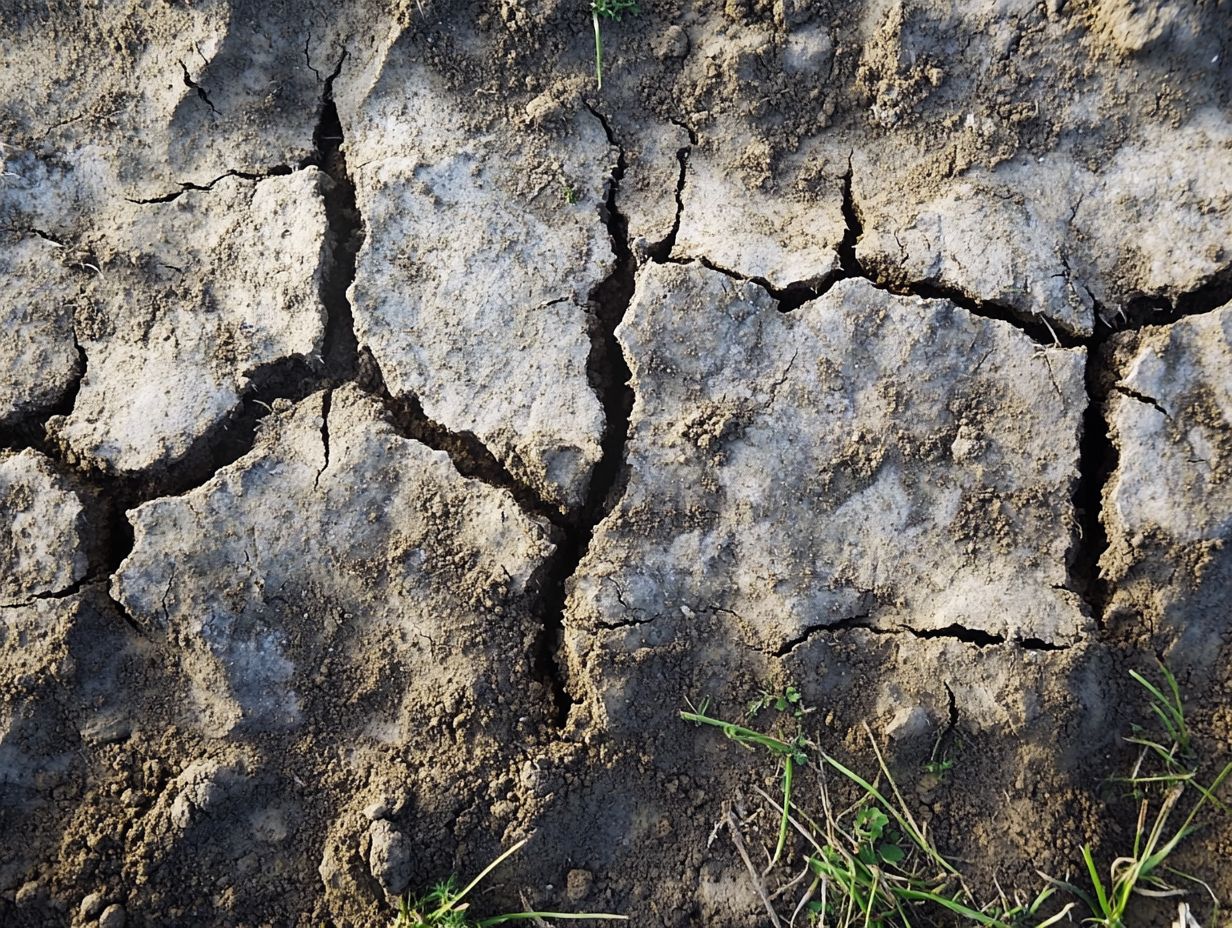
The impact of freeze and thaw on soil refers to the physical and chemical changes that occur in soil due to repeated cycles of freezing and thawing. These changes can significantly affect soil health, stability, and nutrient availability.
How does freeze and thaw affect soil stability?
Freeze and thaw cycles can cause the soil to expand and contract, leading to cracks and fissures. This can weaken the soil’s structure, making it more prone to erosion and landslides.
Can freeze and thaw damage plant roots?
Yes, freeze-thaw cycles can damage plant roots. As the soil freezes, it can shift and push against the roots, causing them to break or become dislodged. This is especially damaging to young or shallow-rooted plants.
How does freeze and thaw affect nutrient availability in soil?
Freeze and thaw cycles can break down soil particles, releasing nutrients. However, repeated freezing and thawing can also lead to nutrient leaching, making them less available to plants.
What can be done to mitigate the impact of freeze and thaw on soil?
Several steps can be taken to mitigate the impact of freeze and thaw on soil structure. These include using mulch to insulate the soil, planting cover crops to hold the soil in place, and adopting sustainable agricultural practices. Avoid walking or driving on frozen soil to prevent compaction.
Is freeze and thaw a natural process, or is it caused by human activity?
Both natural factors, such as temperature changes, and human activities, like construction and land use changes, contribute to freeze-thaw cycles in soil. However, excessive human disturbance can accelerate and worsen the impacts of freeze and thaw on soil health, leading to fragmentation and altering pore size distribution.

